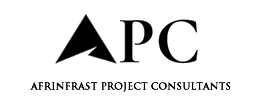
Since the Grenfell Tower tragedy in 2017, the construction and property sectors have undergone a fundamental transformation in how fire safety is approached. Not just in practice and regulation, but in how it’s insured. One date in particular has come to define this shift in the professional indemnity (PI) market
21 December 2018.
So, what’s the significance of this date? And why are professionals still seeing claims rejected if their work predates it?
The insurance fallout after Grenfell
In the wake of Grenfell, the insurance market saw a surge in claims and potential exposures related to cladding, combustibility, and fire safety design. Historic building standards were no longer seen as adequate, and insurers faced a wave of uncertainty around who might be liable — and for how long.
As a result, PI insurers took action to limit their retrospective exposure. From late 2018, many introduced blanket exclusions for claims involving fire safety and cladding, particularly for work carried out before the sector began adopting more robust standards.
Why 21 December 2018?
While this date wasn’t the result of a court ruling or a specific legal deadline, it became a pivotal point in the insurance market due to the growing regulatory pressure and industry response to fire safety concerns.
On 11 December 2017, the Department for Communities and Local Government (as it was then known) issued an advice note to landlords and building owners of tall residential buildings with aluminium composite material (ACM) cladding. This guidance helped building owners assess the fire risk of ACM and determine what safety measures were necessary.
As testing widened, it became clear that other cladding materials posed similar risks. The push for more stringent safety standards gained momentum.
Then, on 21 December 2018, the Building (Amendment) Regulations came into force, introducing a total ban on combustible materials in the external walls of residential buildings over 18 metres. This regulatory change was paired with the publication of Advice Note 14 from the Ministry of Housing, Communities and Local Government (MHCLG), extending fire safety guidance to high-rise buildings that didn’t use ACM but still posed risks.
Although not a legislative mandate on PI insurers, this date coincided with a shift in the market: insurers began embedding blanket exclusions in PI policies for fire safety and cladding-related claims, especially for work done before this point.
Later, in July 2019, MHCLG issued another advice note (undated and unnumbered) in response to the Barking Riverside balcony fire, stating that combustible materials should not be used on balconies at any height. While framed as a clarification, many professionals saw it as a further extension of safety restrictions.
In practice, 21 December 2018 became the widely recognised cut-off for insurers. Work carried out before this date is still frequently excluded from PI cover if the claim relates to fire safety or cladding regardless of whether the guidance at the time was clear or not.
What happened after?
In more recent years, the market has cautiously reintroduced limited and highly specific cover for fire safety matters. But here’s the catch:
- Cover is usually restricted to post-Grenfell work often from 2018 onwards.
- Even then, it often comes with tight exclusions, increased excesses, or lower limits of indemnity.
- Legacy work (pre-2018) continues to be excluded almost universally.
- This reflects a balancing act: giving professionals the ability to maintain some cover moving forward, without reinsurers and insurers taking on potentially catastrophic historical exposures.
What does this mean for professionals?
If you’re involved in architecture, engineering, surveying, or contracting, and provided services relating to fire safety or cladding before December 2018, it’s highly likely those activities are excluded under your current PI policy even if you’ve maintained continuous cover.
If you’re asked to enter into a standstill agreement, or face a claim, you may be proceeding as a prudent uninsured. That means it’s essential to seek independent legal advice before signing anything that might affect your liability or rights down the line.
Need help navigating the PI landscape?
The professional indemnity landscape has changed and continues to evolve. Understanding why 21 December 2018 matters helps clarify where the line has been drawn, and why professionals must now navigate fire safety liability with heightened caution.
If you’re unsure whether your current PI policy offers meaningful protection for historic fire safety work, or if you’ve received a letter of claim, don’t go it alone. Get advice early, and consider speaking with your broker or legal advisors about your position and options.
At Clarke Williams we specialise in PI insurance for construction professionals. We’re here to help you understand your cover, manage claims, and connect you with the right support.
Sources & further reading
Building Safety Act 2022 – UK Government Overview
Outlines new fire safety responsibilities and regulatory changes introduced post-Grenfell.
RICS – Professional Indemnity Insurance and Fire Safety Advice
Provides insight into PI exclusions related to cladding and fire safety.
Association of British Insurers (ABI) – Guidance on PI Insurance
Offers explanations of typical exclusions and how PI policies have adapted.
Law Society Gazette – Legal Implications of Fire Safety PI Claims (search for PI insurance and cladding)
Provides context for legal risks and standstill agreements in cladding claims.
The post Fire safety & PI insurance: why 21 December 2018 changed everything appeared first on Planning, Building & Construction Today.

